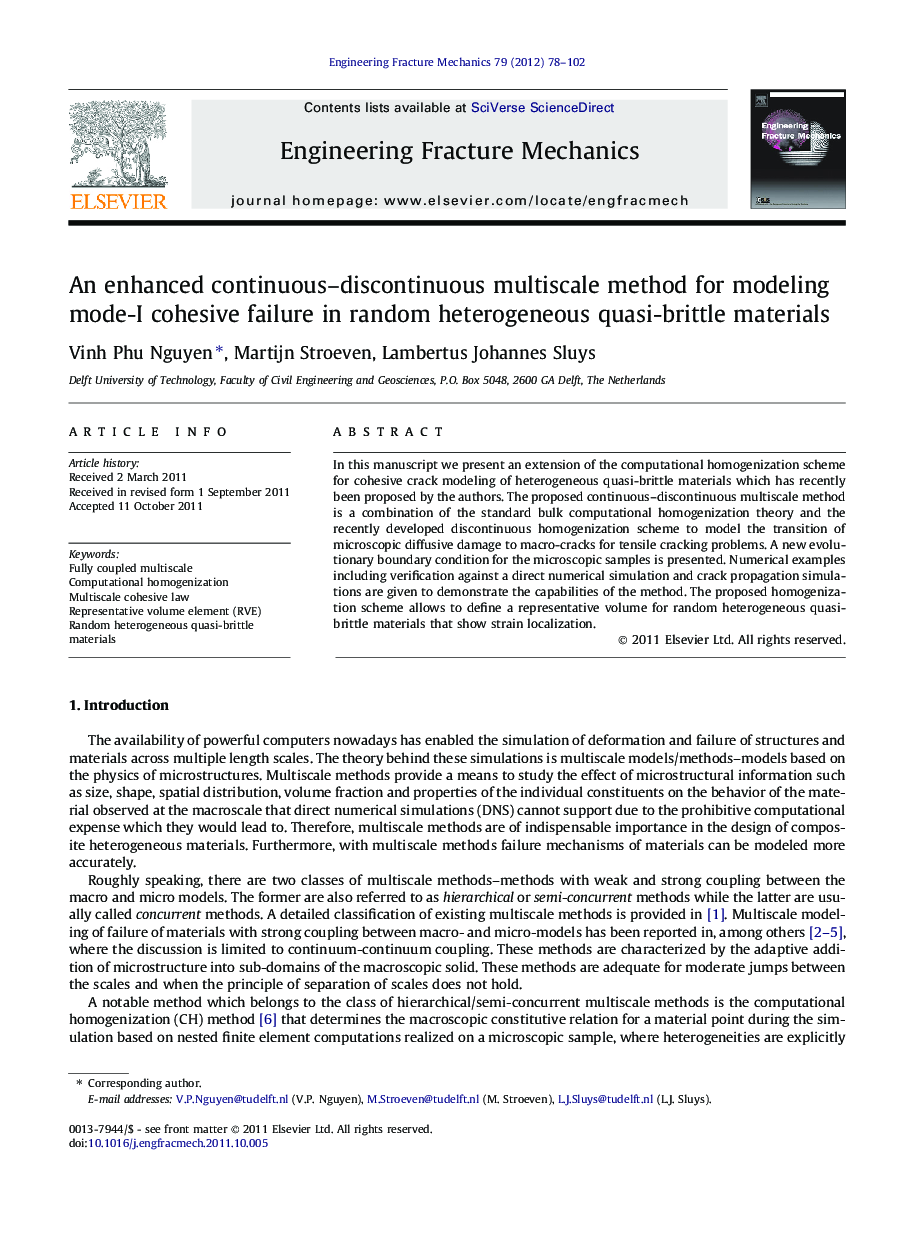| Article ID | Journal | Published Year | Pages | File Type |
|---|---|---|---|---|
| 767468 | Engineering Fracture Mechanics | 2012 | 25 Pages |
In this manuscript we present an extension of the computational homogenization scheme for cohesive crack modeling of heterogeneous quasi-brittle materials which has recently been proposed by the authors. The proposed continuous–discontinuous multiscale method is a combination of the standard bulk computational homogenization theory and the recently developed discontinuous homogenization scheme to model the transition of microscopic diffusive damage to macro-cracks for tensile cracking problems. A new evolutionary boundary condition for the microscopic samples is presented. Numerical examples including verification against a direct numerical simulation and crack propagation simulations are given to demonstrate the capabilities of the method. The proposed homogenization scheme allows to define a representative volume for random heterogeneous quasi-brittle materials that show strain localization.
► We present an enhanced continuous–discontinuous multiscale method for modeling mode-I cohesive failure in random heterogeneous materials. ► Macroscopic failure is modeled using cohesive discrete cracks whereas microscopic failure is modeled using a non-local continuum damage theory. ► The proposed homogenization allows for the definition of an RVE for softening materials. ► A new evolutionary boundary condition for the microscopic samples is presented.
